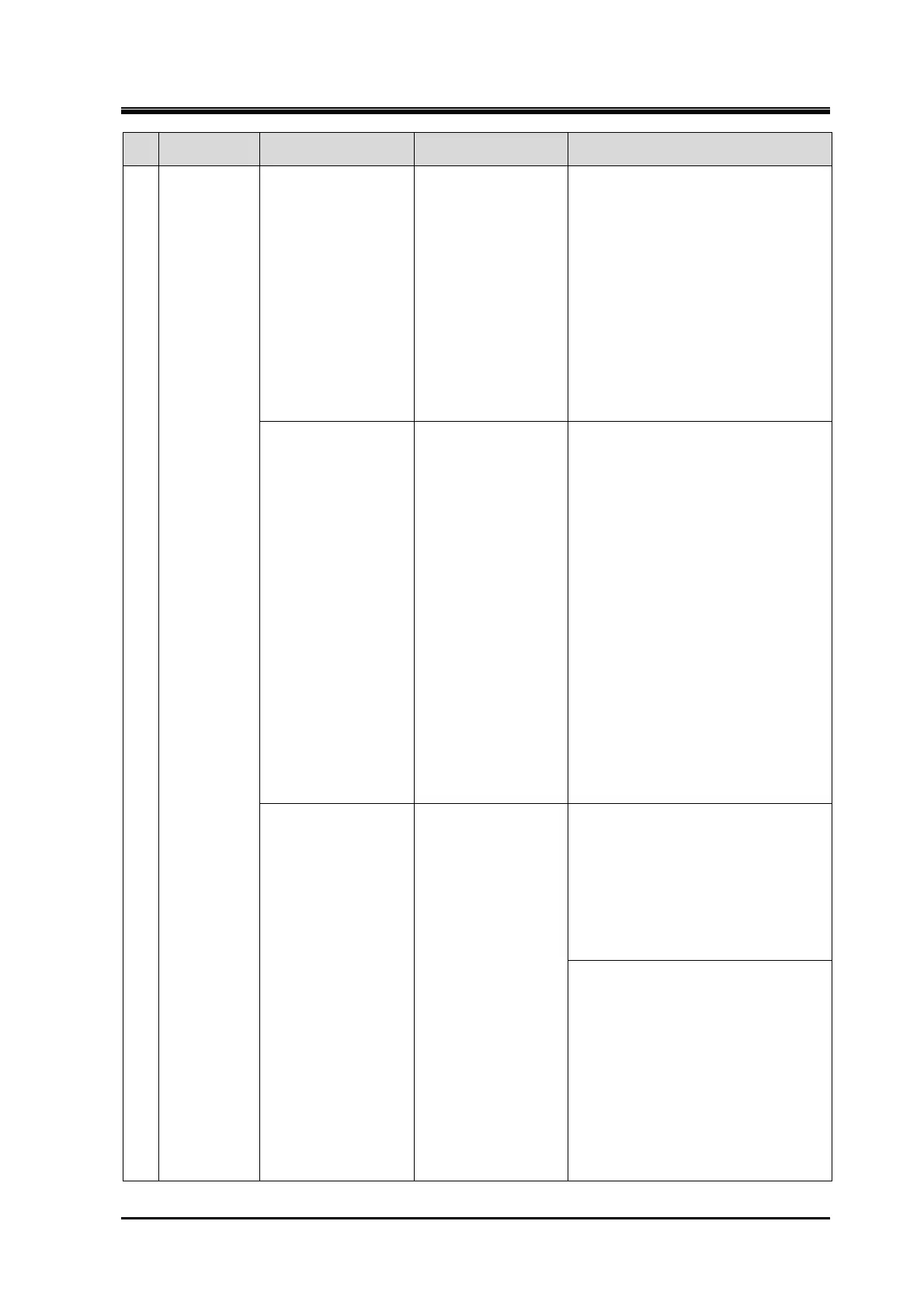2205B0JE-DA-J-N_2014.05.
6 Troubleshooting
Screw Compressor J-series
6-9
Trouble Direct causes Factors Actions
11
Abnormal
vibration
and/or
noise of
compressor
Oil hammer Continuous low
load operation at
below 30% of
capacity control
During low load operation, lubricant
is poorly discharged. Because of
this, the amount of oil that remains
inside rotor mesh increases and oil
becomes condensed.
→Avoid continuous low load opera-
tion.
* Especially for light gas liquids
(such for He and NH
3
),10 minutes
low load operation has a negative
effect.
For liquid types such as fluorocar-
bons, operations of more than 30
minutes are not recommended.
Liquid backflow
during startup
* Initial abnormal
noises are
conspicuous.
→If this
phenomenon
happens, in many
cases,
compressor
(stack and thrust
bearing for rotor
and casing) gets
instantly
damaged. This
phenomenon
may also have an
impact on
continued
operation.
When compressor
is stopped,
refrigerant is
liquefied and
remains in
upstream piping.
This is due to various factors such
as a leak inside the liquid supply
solenoid valve on load side,
insufficient heat exchange
(refrigerant evaporation) in heat
exchanger, or trapping caused by
wrong piping in piping route.
→Identify the causes (more than
one may exist), and take
measures. Then, perform an
overhaul of the compressor.
Liquid backflow
during operation
* Frosting on
suction side is
conspicuous.
* In many cases,
the phenomenon
is often
“mist-back”
(suction of moist
steam) rather
than liquid
backflow.
* To prevent this
phenomenon,
gas‐liquid
separator
(accumulator)
can be installed.
Opening for liquid
supply expansion
valve is too large.
For temperature type expansion
valve, inspect temperature sensitive
cylinder and capillary tube.
Take measures if any defects are
found.
For incompatible orifice due to the
change in operating conditions,
replace orifice.
For electronic expansion valve,
inspect devices on expansion valve
opening control devices (circuit)
such as temperature sensor,
converter, controller (over-heating
regulator). If any defects are found,
replace the faulty devices.
As with temperature type expansion
valve, for incompatible orifice due to
the change in operating conditions,
replace orifice.
